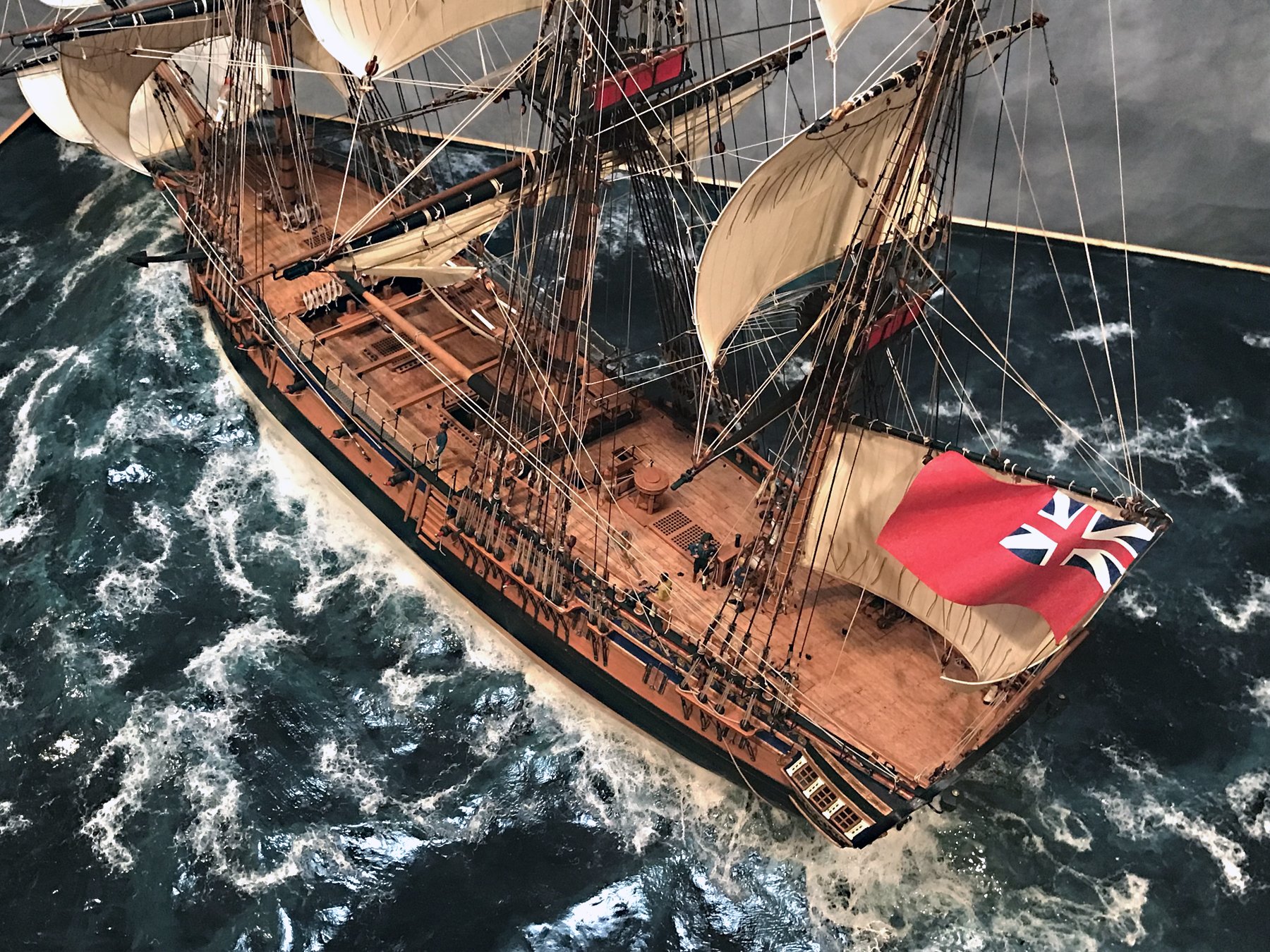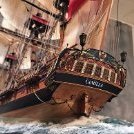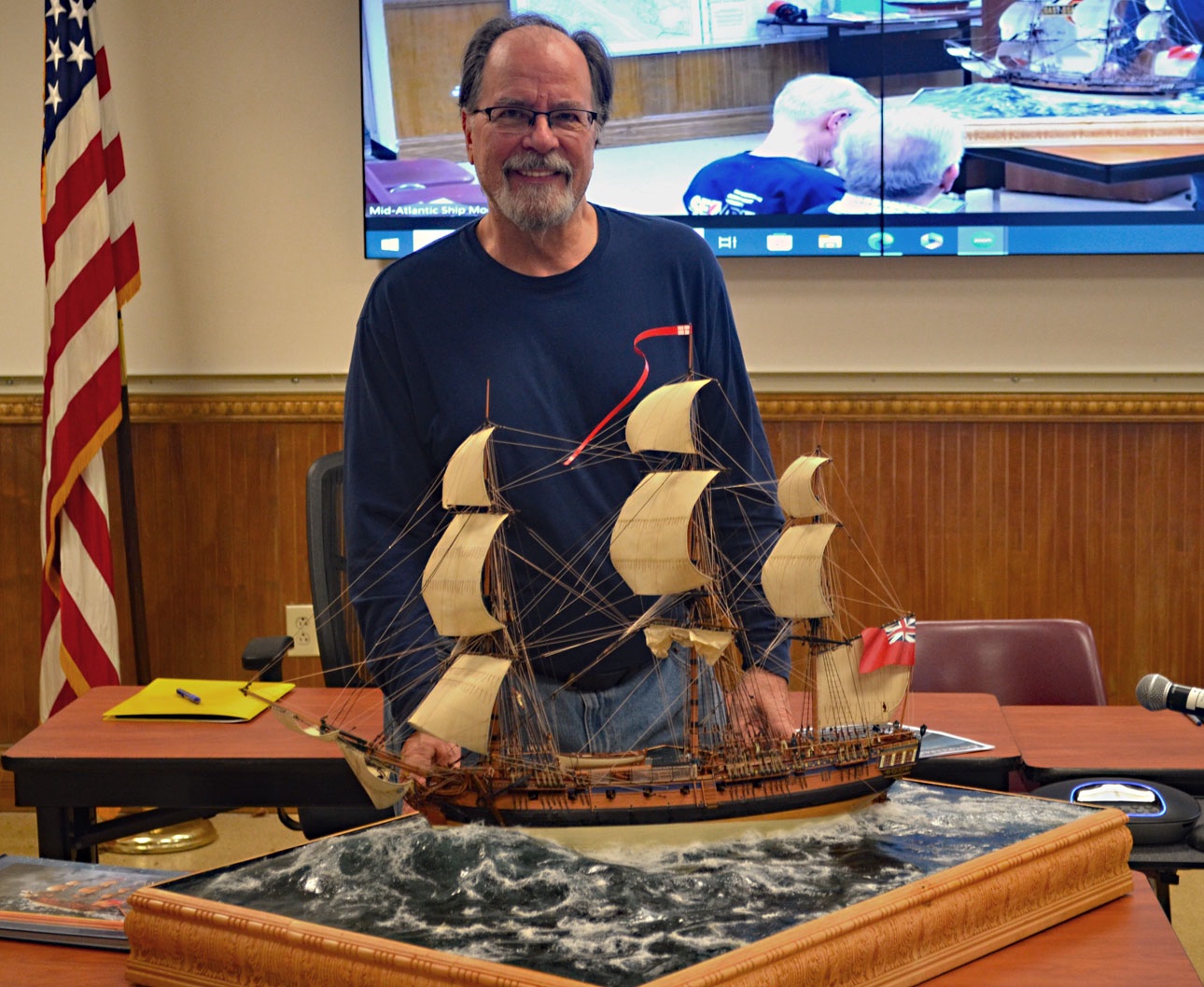-
Posts
1,586 -
Joined
-
Last visited
Content Type
Profiles
Forums
Gallery
Events
Everything posted by hollowneck
-
B.E., very nice, good progress. I keep inspecting your build photos for Wallace whom I spotted early-on. Perhaps he's gone walkabout, not about to be Pressed!
- 648 replies
-
- Indefatigable
- Vanguard Models
-
(and 1 more)
Tagged with:
-
Here is a ‘go-to’ book I’ve used for years: Rigging Period Ship Models by Lennarth Petersson. Go to Amazon; Kindle edition:$12.; Hardcover: $35. & Softcover= $80!! This book’s strength is in the myriad of detailed visuals and extensive treatment for typical era square-rigged ships, including sail plans. The Lees book is also helpful, and I do refer to it; however, it is not essential for most modelers. Good Luck. You can do it! https://www.amazon.com/Rigging-Period-Models-Step-Step/dp/1848321023/ref=sr_1_1?crid=32OZM53EG8N00&keywords=lennarth+petersson&qid=1678820704&sprefix=Lennarth%2Caps%2C142&sr=8-1
- 542 replies
-
- Sphinx
- Vanguard Models
-
(and 3 more)
Tagged with:
-
Thank you kindly @Spooky spoon. Rigging a sailing model, especially a complex, large vessel with square sails (during the “Age of Sail”), requires knowledge, a good set of plans, the correct mechanical bits (including rope,not thread),and lots of patience and TIME. I remind my friends in our hobby that once they’ve completed a fully-loaded hull, their build of a full-on sailing vessel is at about a halfway point in modeling terms. Personally, I really enjoy the complex challenges involved with rigging; I know there are many who dislike and even “hate” it. This is but one example of how eclectic our hobby remains; after all, because crafting model ships (whether scratch or kit)is a pastime, the whole idea is to seek relaxation, pleasure and a host of other satisfactions. Go For It, I say! There are many really excellent resources here in the forum on how to up your rigging game; my Build Log is but one source.
- 542 replies
-
- Sphinx
- Vanguard Models
-
(and 3 more)
Tagged with:
-
Your model is looking quite nice. There is a fine line to approach with weathering that is easy to cross over so it starts to look hokey, over-done; you've handled this "character development" admirably, it's looking just right to my eye.
-
Good suggestion, Glenn. A second Amati clamp will do the job-while taking-up less benchtop space.
- 648 replies
-
- Indefatigable
- Vanguard Models
-
(and 1 more)
Tagged with:
-
Kevin, You’re the Max Verstappen of MSW. First Past The Build Log Post! Zooming along nicely…
- 443 replies
-
- Indefatigable
- Vanguard Models
-
(and 1 more)
Tagged with:
-
Big Thanks, Tom. It will be good to see you as well as all the NE club crews in New London this spring. I'm also looking forward to seeing your latest project, likely another NE show future award-winner!
- 542 replies
-
- Sphinx
- Vanguard Models
-
(and 3 more)
Tagged with:
-
Thank You, thank you, thank you.....You are most welcome. This was a very gratifying build: great engineering and quality of components, well-done plans and instructions, lots of places to add one's own "special sauce" - what more can a ship modeler ask for? Oh yeah, maybe next kit can throw in a pint of Guinness.
- 542 replies
-
- Sphinx
- Vanguard Models
-
(and 3 more)
Tagged with:
-
Thanks, Dave. Much appreciated. That's my speciality: double-takes! "Is that a ship on the sea, or are you just happy to see me?"🤣
- 542 replies
-
- Sphinx
- Vanguard Models
-
(and 3 more)
Tagged with:
-
Bob, thanks for the (indirect) high fives on James' Indy Build idea for me. Admittedly, I am now thinking about this Indy diorama prospect and just need to figure out a legal way to get back at James for this enticing tease!...I admit, my modeling fingers are sort of itching to line-up a new, challenging project. But first, I've got to clean up my shop: that will occupy me for a couple months.😆
- 542 replies
-
- Sphinx
- Vanguard Models
-
(and 3 more)
Tagged with:
-
Thanks, James. I'm inclined to blush reading this...and humbled by Chris' and your work to design a kit* of this calibre. *and other goodies like Vanguard's 3D-printed "clinker" boat and no less than ten über-detailed figures that bring her to life.
- 542 replies
-
- Sphinx
- Vanguard Models
-
(and 3 more)
Tagged with:
-
Thank you, Kevin. My turn to follow your Build Log for Chris' Indy. You're chugging right along on her! Good, informative posts.
- 542 replies
-
- Sphinx
- Vanguard Models
-
(and 3 more)
Tagged with:
-
Thank You, James. What an interesting idea for a (large) diorama!...Quayside, sails furled, Burton pendants (and other spars) hoisting a last-minute carronade, water and provision barrels being swung over from the dock, etc. I also like the idea of placid water at the waterline. I think I could only pull this off if Chris could make a handful of figures I could add to such a depiction. Building one of Chris' models in this manner would truly be like jazz improvisation! Me (and HMS Camilla) at this month's Philadelphia Ship Model Society's meeting earlier this week. The diorama's "footprint" is not modest; I wonder how large a dockside depiction of Pellew's cruiser Indy would need to be?
- 542 replies
-
- Sphinx
- Vanguard Models
-
(and 3 more)
Tagged with:
-
Like I have done for my previous diorama models, I've compiled a 11" X 14" large-format book of photos I've taken of my HMS Camilla model in her seascape presentation. This 24-page hardcover picture book also contains a greatly truncated historical reference to the Royal Navy warship that served throughout the British/American War of 1776-1783. There are no Build Log photos in this book as seen here in the forum. The photos of the completed model are juxtaposed with several illustrations by artist Nicholas Pocock's paintings of the era to lend some context to the ship's legacy.
- 542 replies
-
- Sphinx
- Vanguard Models
-
(and 3 more)
Tagged with:
-
I just blinked…did I miss anything? Look’in good, Kevin, coming together nicely. Ron
- 443 replies
-
- Indefatigable
- Vanguard Models
-
(and 1 more)
Tagged with:
-
Me too, Bob. For a large, sophisticated build like the Sphinx, Chuck's Confederacy, etc., you'll be dedicating many months to a build. For some, it can involve years, even with a kit. As the legacy snipe goes: "Love It, Or Leave it!"....also, "Love The One You're With" (Stephen Stills, I believe). Good for you on your recent Getaway. I got some serious attitude adjustment these past few weeks with a trip to the Barrier Reef in Belize. Ahhhhhhhhhhhhhhh Build the one YOU WILL LOVE. You have the bench, the tools, the boxes await. Which one will it be? Ron
-
Nice oars, Brian. What happened to that keg of vodka?
- 68 replies
-
- Morel
- Master Korabel
-
(and 1 more)
Tagged with:
-
I believe that’s a jug of emergency vodka.
- 68 replies
-
- Morel
- Master Korabel
-
(and 1 more)
Tagged with:
-
True, you're correct: I need to link these signature items so they go to the proper places. I haven't realized how this software goodie works until recently. Now that a yearlong build is completed I will make the time for a little member maintenance! Thanks for reminding me.
- 542 replies
-
- Sphinx
- Vanguard Models
-
(and 3 more)
Tagged with:
-
Thank you, Glenn. Yes. There is an extensive photo gallery on my forum "home page." Why it's listed the 4th down entry for my model albums I have no idea....but the Camilla photos are posted there. Like everyone else, these holidays were crazy busy for me and I may have overlooked formally posting info on my log here for folks that they could go to my gallery albums; my apologies for this. Thank You, Chris. You (& Jim) are the one's responsible for creating such a fine kit. Your excellent work allowed me to get crazy with additional details and then get super-excited to put her into a roiling sea!
- 542 replies
-
- Sphinx
- Vanguard Models
-
(and 3 more)
Tagged with:
About us
Modelshipworld - Advancing Ship Modeling through Research
SSL Secured
Your security is important for us so this Website is SSL-Secured
NRG Mailing Address
Nautical Research Guild
237 South Lincoln Street
Westmont IL, 60559-1917
Model Ship World ® and the MSW logo are Registered Trademarks, and belong to the Nautical Research Guild (United States Patent and Trademark Office: No. 6,929,264 & No. 6,929,274, registered Dec. 20, 2022)
Helpful Links
About the NRG
If you enjoy building ship models that are historically accurate as well as beautiful, then The Nautical Research Guild (NRG) is just right for you.
The Guild is a non-profit educational organization whose mission is to “Advance Ship Modeling Through Research”. We provide support to our members in their efforts to raise the quality of their model ships.
The Nautical Research Guild has published our world-renowned quarterly magazine, The Nautical Research Journal, since 1955. The pages of the Journal are full of articles by accomplished ship modelers who show you how they create those exquisite details on their models, and by maritime historians who show you the correct details to build. The Journal is available in both print and digital editions. Go to the NRG web site (www.thenrg.org) to download a complimentary digital copy of the Journal. The NRG also publishes plan sets, books and compilations of back issues of the Journal and the former Ships in Scale and Model Ship Builder magazines.







